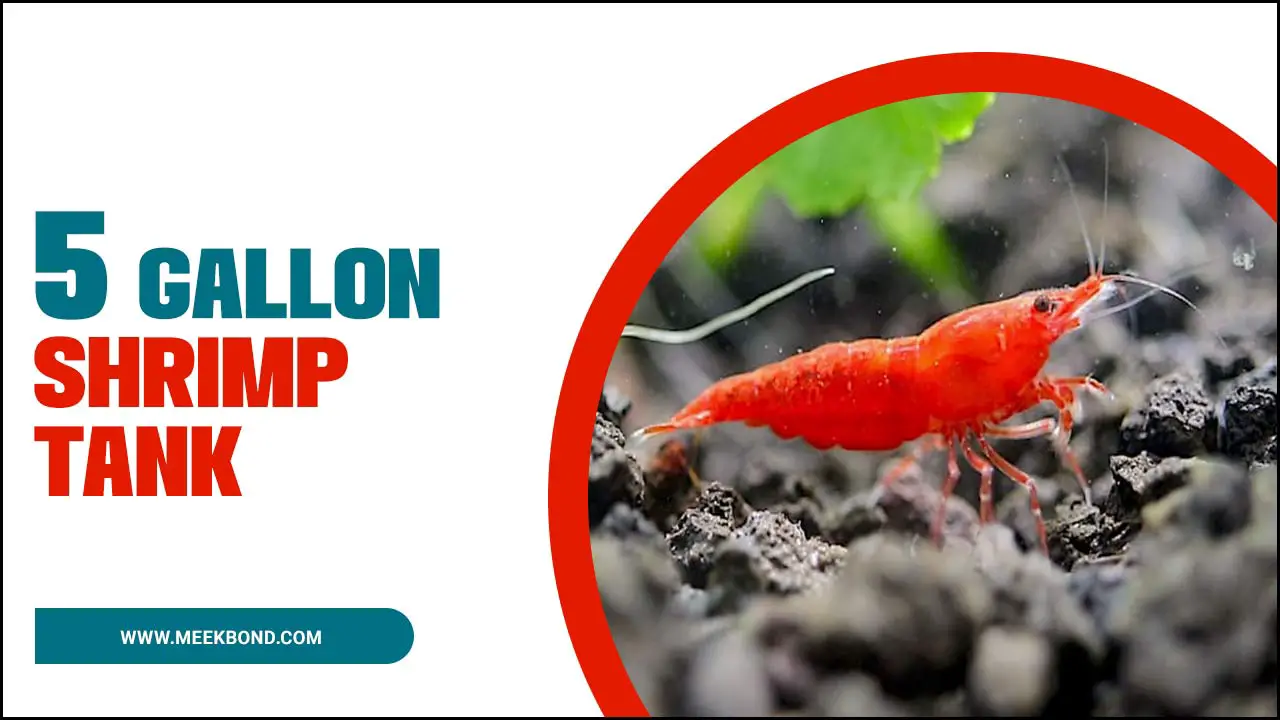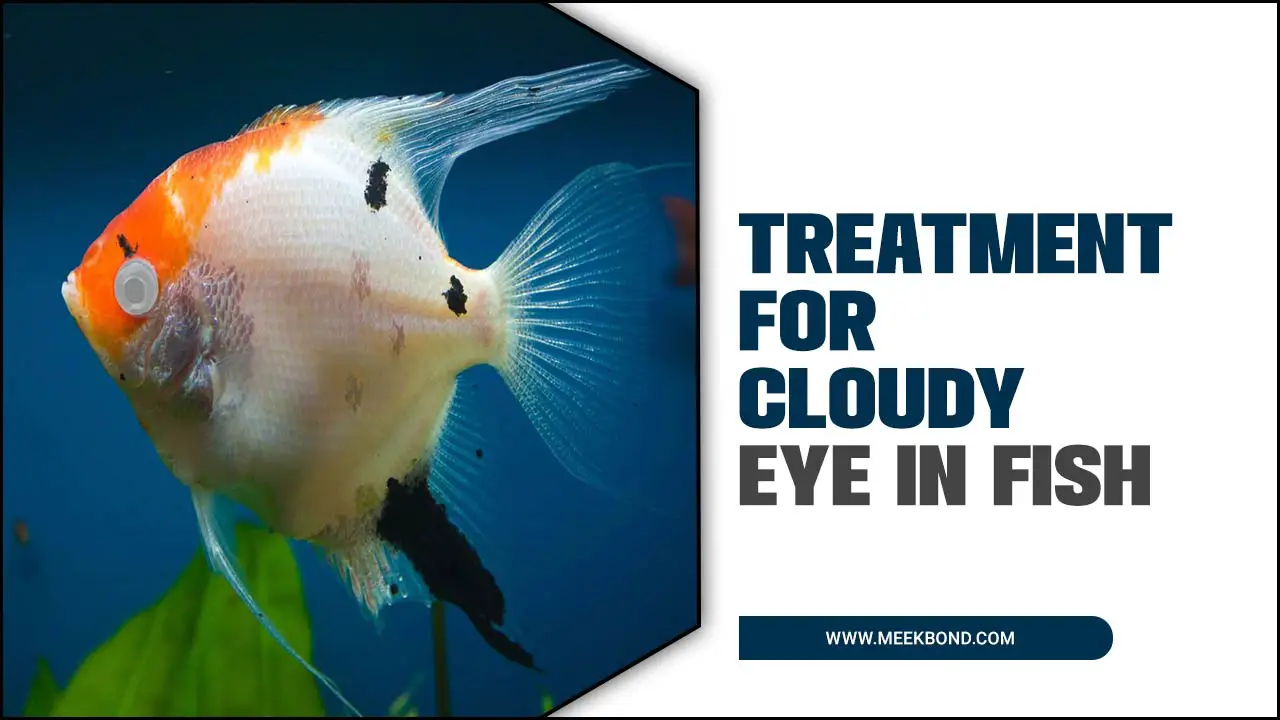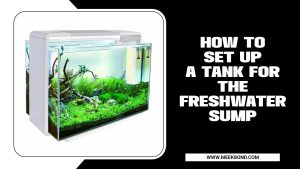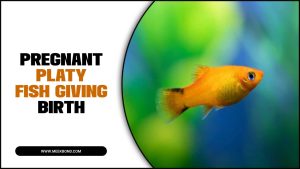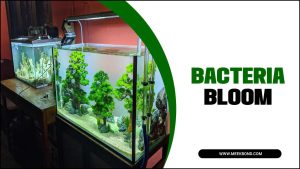Aquariums are an attractive and beautiful way to bring a bit of the ocean into your home or office. Watching fish and other aquatic creatures swim in their little world can be incredibly calming and therapeutic.
And with so many different fish species available, there’s no limit to the colors and patterns you can find in an aquarium. It adds color and beauty to your aquarium and acts as a natural filter for the water, creating a healthy environment for the fish.
But with so many different types of aquatic plants available, choosing which ones to include in your aquarium can be difficult. We will provide you with a comprehensive on selecting the right aquatic plants for your aquarium and how to grow them effectively.
Additionally, we will address common problems people face with aquatic plants and how to resolve them. Stay tuned as we also discuss the role of driftwood in aquascaping and some of the best beginner-friendly aquatic plants you can start with.

An Overview Of Aquatic Plants For Your Aquarium – With Grooming Process

Aquatic plants are a beautiful addition to any water feature, whether it’s a pond, aquarium, or even a small tabletop fountain. These plants not only add aesthetic appeal to your aquatic environment but also provide numerous benefits for the ecosystem.
They help oxygenate the water, provide food and shelter for fish and other aquatic creatures, and can even help filter out harmful pollutants. Some popular types of aquatic plants include water lilies, lotus flowers, and hornwort.
It’s important to research which types of plants are best suited for your specific water feature, as different varieties have varying light and temperature requirements. Here is an overview of aquatic plants for your aquarium – with the grooming process. Scroll down to get in details.
1. Types Of Aquatic Plants
Are you looking to add some life and color to your aquarium? Try using live aquatic plants. Many options are available such as Anubis, amazon sword, java moss, hornwort, and dwarf Sagittaria, among others.
Adding foreground or background plants such as Ludwigia, and Cryptocoryne lutea and shorter plants like Anubias nana or java fern can give an outstanding look to your aquascape.
However, make sure to consider the pH level of the water before selecting any plant. Moreover, adding driftwood or marimo moss balls can enhance the beauty of your planted tank.
2. Choosing The Right Plants For Your Aquarium

Choosing the right aquatic plant for your aquarium is crucial. Factors like lighting intensity, water parameters, and fish species play a significant role in making the right choice. Java ferns, Anubias nana, Amazon sword, and hornwort are beginner aquarium plants that can thrive in various light intensities. Also, root tabs and fertilizers containing potassium, phosphorus, and manganese enhance their growth. The addition of snails or Marimo moss balls can also act as decoration while aiding nitrogen cycling in your freshwater aquarium.
3. Planting Techniques For Aquatic Plants
Planting aquatic plants in your aquarium requires a nutrient-rich substrate to ensure their health and growth. Choose between anchoring or burying techniques based on the plant’s size and type, grooming and trim to prevent overgrowth regularly.
To create a stunning aquascape, incorporate a variety of foreground and background plants, such as mosses like java moss or ferns like anubias nana. Additionally, tissue culture plants are easy to grow and maintain with root tabs or fertilizers providing nutrients. Testing water parameters before planting live aquarium plants is important to avoid ammonia spikes and algae growth.
4. Fertilizing Your Aquatic Plants

Proper fertilisation is crucial to ensure the health and growth of live aquarium plants in your freshwater aquariums or planted tanks. Fertilizers intended explicitly for aquatic plants must be chosen to avoid nutrient deficiencies that hinder plant growth and lead to algae growth.
Liquid or granular fertilizers or even root tabs may be used to provide essential nutrients like potassium and phosphorus required by the plants. In addition to regular fertilization practices at proper intervals, optimal lighting levels and CO2 concentrations contribute significantly to a beautiful aquascape.
5. Lighting And CO2 Needs For Aquatic Plants

Proper lighting and carbon dioxide levels are critical for the healthy growth of aquarium plants. The duration and intensity of light should be balanced according to the specific needs of each plant to prevent overexposure or underexposure. While adding CO2 can enhance plant growth, one must be cautious not to harm fish in the aquarium.
Furthermore, different freshwater aquarium plants have varying lighting and CO2 requirements. Therefore, researching before selecting which ones to incorporate is recommended.
6. Aquascaping With Aquatic Plants

For aquarists looking to create a beautiful underwater decoration, aquascaping with live plants like Anubis, java ferns, and Amazon swords is essential. Arrange these aquatic plants with driftwood and other decorations to achieve a natural look in your aquarium.
Ensure proper grooming and maintenance to prevent algae growth. Consider adding CO2 injection or fertilizer to enhance the lushness of your planted tank. Secondary key terms used: aquarium, moss, anubias nana, java moss, beginner aquarium plants, amazon sword, substrate, tissue culture plants.
Common Problems With Aquatic Plants And How To Solve Them
When you keep aquatic plants, you may face common problems like algae blooms and nutrient deficiencies. To prevent these issues from occurring, it’s essential to maintain a proper balance of light intensity and nutrients in the aquarium water.
Adding fertilizers or substrate that contains essential nutrients can help address nutrient deficiencies. Maintaining good water quality by avoiding overcrowding in the aquarium is also crucial in preventing plant diseases. Regular pruning and maintaining aquatic plants will help keep your aquarium healthy and vibrant.
Maintenance And Care For Aquatic Plants
Maintaining healthy aquatic plants is crucial for a thriving aquascape in your freshwater aquarium. This involves proper lighting intensity, water parameters like pH and nitrogen levels, balanced nutrient levels with fertilizers or root tabs, and regular pruning to avoid nuisance algae growth.
Some beautiful plants that require low to medium light are Java Moss and Cryptocoryne Lutea. For foreground plants, Anubias Nana is a great choice. Amazon Sword or Ludwigia make the perfect background plant in your aquascape.
How To Avoid Ammonia Spikes In Your Aquariums

Preventing ammonia spikes in your aquarium is of utmost importance, and it starts with understanding the nitrogen cycle. Regular monitoring of ammonia levels using a water testing kit is vital to ensure they are within acceptable limits.
Overfeeding should be avoided, and uneaten food should be removed promptly to prevent them from breaking into ammonia. Regular water changes must be performed to dilute excess ammonia and maintain optimal water quality.
Live plants or beneficial bacteria can also help reduce ammonia levels. Adding beginner-friendly live plants such as Anubias Nana, Amazon Sword, and Java Fern can absorb nutrients from the water column, reducing algae growth and absorbing some excess ammonia.
It’s important to note that adding too many fish at once or too early in the aquarium’s setup can lead to a spike in ammonia levels. Adding fish gradually over time is advisable as the beneficial bacteria colony establishes itself in the tank.
Following these guidelines and consistently monitoring and maintaining optimal water quality can create a healthy and thriving aquarium environment for your aquatic pets.
Driftwood And Its Role In Your Aquascape

Driftwood can be a great addition to your aquarium for its aesthetic appeal and its functional role in your aquascape. When placed in your tank, driftwood can provide a natural and realistic look, mimicking the environment of a river or stream.
It also offers a variety of benefits for your aquatic plants and animals. Driftwood can help regulate your tank’s pH levels by releasing tannins that naturally lower the pH, which is beneficial for certain species of fish and plants.
t can also provide a surface for beneficial bacteria to grow on, which helps maintain water quality. When choosing driftwood for your aquarium, select pieces that are safe for aquatic life and have been properly cleaned and treated to prevent any harmful substances from leaching into the water.
Best Beginner Plants For Your Aquarium
When selecting the ideal plants, opting for ones that are easy to maintain and require low maintenance is important. It is also essential to consider the fish species in the aquarium and their needs while choosing aquatic plants.
If you’re new to aquariums, choosing the right plants can make all the difference in creating a healthy and vibrant aquatic environment. Here are some of the best beginner plants for your aquarium.By starting with these beginner plants, you can build confidence in caring for aquatic plants and create a beautiful underwater world for your fish.
- Java Moss: This low-maintenance plant is easy to care for and provides a natural hiding place for fish.
- Anubias: With its sturdy leaves, Anubias is perfect for beginners who may accidentally damage delicate plants. It also grows well in low-light conditions.
- Amazon Sword: This hardy plant can grow up to 20 inches tall and adds lush greenery to your aquarium. It does require moderate lighting and fertilization but is relatively easy to care for.
Understanding The Importance Of Substrate In Your Aquarium

A successfully planted aquarium requires proper attention to the substrate. It’s the foundation for live plants and can impact their growth due to unique features that impact water chemistry and nutrient availability.
You must maintain it regularly to ensure a healthy environment for aquarists’ favourite aquatic plants, like Java moss or Cryptocoryne Lutea. Choose the right substrate based on fish species, plant species, and personal preference to avoid nuisance algae or ammonia spikes.
Conclusion
Aquatic plants are a great addition to any aquarium, providing aesthetic and functional benefits. They add color and life to the tank while providing numerous benefits for your fish. Not only do they enhance the beauty of your tank, but they also provide natural filtration and oxygenation for your fish.
With so many different types of aquatic plants available, choosing which ones are best for your specific aquarium setup can be overwhelming. We’ve discussed aquatic plants for your aquarium.
That is why it is important to research and seek expert advice in selecting the right. Many factors must be considered, from choosing the right substrate to understanding their lighting and CO2 needs.
Frequently Asked Questions
How Do I Choose The Right Aquatic Plants For My Aquarium?
To pick the right aquatic plants for your aquarium, take into account the tank’s size and type. Research each plant’s lighting and water conditions to ensure they thrive. Opt for plants with similar care needs to simplify upkeep, and don’t overcrowd your aquarium to avoid compromising water quality.
What Are Some Benefits Of Adding Aquatic Plants To Your Aquarium?
Incorporating aquatic plants into your aquarium can provide numerous benefits for your fish. Not only do they oxygenate the water and reduce algae growth, but they also create a more appealing underwater environment. Additionally, some species can offer food and shelter for your pets.
What Is The Best Way To Care For And Maintain Aquatic Plants In My Aquarium?
To care for aquatic plants in your aquarium, provide adequate light and nutrients through fertilizers, trim decaying leaves to prevent algae growth, and regularly change the water to remove waste. Research the specific care needs of each plant species for optimal health.
Can Adding Aquatic Plants Help Improve The Health Of Fish In My Aquarium?
Indeed, adding aquatic plants can benefit the health of fish in your aquarium. These plants release oxygen and absorb carbon dioxide, creating a better living environment. They also compete for nutrients and reduce algae growth. Moreover, they enhance the aesthetic appeal of the aquarium by creating a natural habitat for fish.
How Can I Ensure That My Aquatic Plants Stay Healthy And Vibrant?
To maintain healthy and vibrant aquatic plants, provide appropriate lighting, perform regular water changes, and fertilize correctly. Be mindful of possible nutrient deficiencies and algae growth. Consider the size of your aquarium, substrate, and water conditions when selecting suitable plants.

Aquarium passion is all about connecting with the aquatic life and providing education to the public on the importance of these creatures. We showcase a wide variety of marine life through our exhibits as well as working with schools to provide unique learning opportunities for students of all ages.



